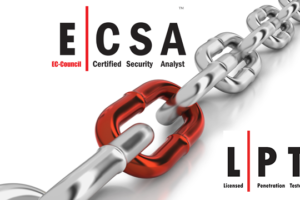 Most of those in the IT and software world know about DevOps and its framework that marries development and operations. DevOps has now become a standard for ensuring continuous deployment of software to meet customer needs. But development and operations aren’t the only elements in the process. Security must be as well. So, when it joins the other two, we now have DevSecOps.
Most of those in the IT and software world know about DevOps and its framework that marries development and operations. DevOps has now become a standard for ensuring continuous deployment of software to meet customer needs. But development and operations aren’t the only elements in the process. Security must be as well. So, when it joins the other two, we now have DevSecOps.
What Is DevSecOps?
For the short definition, you can say that DevSecOps combines development, security, and operations. The foundation of the mindset is security by design. Security must be a forethought in software development, not an afterthought.
For organizations working with a DevOps framework, it’s time to switch to DevSecOps. This may include retooling your team with security experts. The reality is that there will be security vulnerabilities in your code. The question is, do you find it sooner rather than later? Sooner, of course, so that’s where you’ll need to initiate continuous security (CS) provisions.
What Is Continuous Security?
Continuous security (CS) is the process of addressing security concerns and establishing testing in your continuous integration and continuous deployment pipeline. You’re integrating automated security checks that can do two things. First, it can advise times of possible vulnerabilities in the code and monitor for them in the future.
Continuous security involves the product’s entire lifecycle, which means it’s a consideration before writing any code. Then it follows the product through iterations for continuous review of security risks.
DevSecOps Benefits
Realizing benefits from DevSecOps is relatively simple because of what it provides. It leverages automation throughout the software delivery pipeline. You minimize risk, eliminate errors, and prevent downtime. It’s not hard to deploy with the right tools and talent, so any organization should have no challenges adopting it.
Why Do You Need DevSecOps?
You can look at the benefits, and that certainly answers the question. However, DevSecOps is more than a “need.” Rather, it’s really compulsory for any product development team. Look at the cybersecurity landscape and its rapid evolution. The sophistication of cyber-attacks is far beyond what most could have imagined a decade ago.
In the end, DevSecOps brings all the major stakeholders under one umbrella. It treats security as a priority, not something you’ll figure out later. Further, it ensures scalability and compliance with your product deployment. Without its framework, security will suffer.
The DevSecOps Workflow
So, if you’re establishing a DevSecOps framework, what do the workflows look like exactly? Here’s an example:
- Early collaboration: Team members meet to discuss security before work begins. They discuss threat models, functional vs. non-functional security requirements, and the plausibility of security infringing on a design element.
- Development begins: Coders begin work on a new product or new iteration. The coder may use open source code and original code.
- Scanning of code: Security professionals use DevSecOps tools to automate scanning of code to detect vulnerabilities, bugs, or errors.
- Updates and changes: In this step, remediation of the code occurs.
- More testing: Next, the product moves to an environment where you can deploy it and test its function, including the back-end, integrations, security tests, and APIs.
- Pass or fail: If the application passes the tests, it’s ready for deployment in the real world. If it doesn’t, it goes back to remediation.
- Continuous monitoring: After deployment, the application is still under constant monitoring to identify any new threats.
Key Talent for DevSecOps Teams
A DevSecOps team includes a variety of roles with different skillsets. With DevSecOps, you’re adding the security talent to your operations and development team. Most DevSecOps teams need engineers and information security experts. These individuals need advanced experience and expertise in cybersecurity. They should also know about programs that are critical to threat modeling like ThreatModeler.
In addition to hard skills, soft skills are essential as well. Seek out DevSecOps talent who are good collaborators and communicators. Someone naturally curious and able to reverse engineer is also a strong candidate.
DevSecOps Best Practices
When you do formulate your DevSecOps team, there are some hallmark best practices you should use.
- Develop a standard set of coding practices: Your scanning tools won’t find code errors if you don’t have a consensus.
- Be all in on security: Although DevOps is predicated on collaboration, if security is still sitting in a silo, there’s a disconnect. Security needs to be part of the circle and have leadership buy-in.
- Embrace automation: If you want security to match the pace of development and operations, you must use automation. The more you can automate, the faster you can deploy yet still have peace of mind.
- Incorporate penetration testing: Penetration testing is a specific tactic you should leverage. Pen testing can be a great way to find vulnerabilities at the code level early.
- Create a culture, not a “job”: DevSecOps, just like DevOps, isn’t a job; it’s a culture. If you don’t embed it deep in the foundation, you’re going to have challenges that keep you from achieving your software development goals. If you want this to be your culture, it must permeate your organization from the top down.
The Trinity of DevSecOps
The success of DevSecOps is dependent upon three things — people, process, and technology. All three must be in place. You need security experts and champions (people) that carry out repeatable workflows efficiently (process) and have the right tools to do so (technology). Keep this in mind as you consider your DevSecOps transformation.
Ready to Transform?
Is your organization ready to implement DevSecOps? Are there gaps and challenges that aren’t solvable on your own? Contact our cybersecurity experts today to see how we can help.



